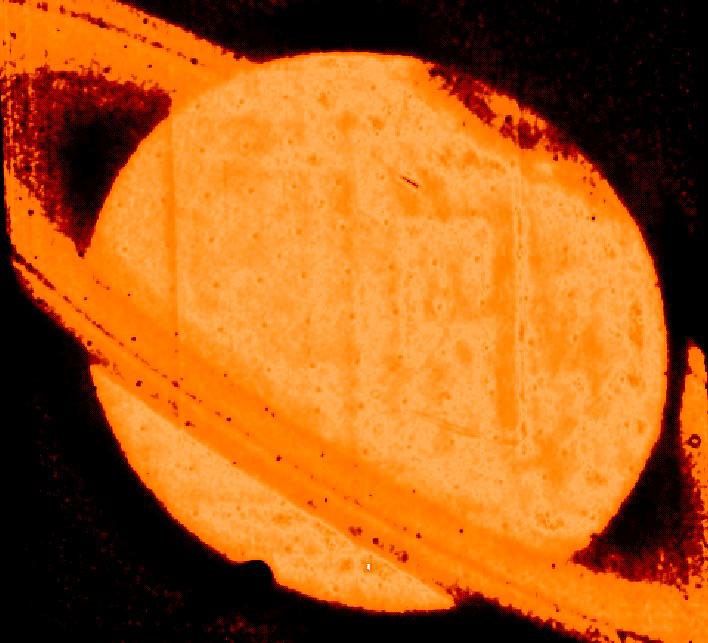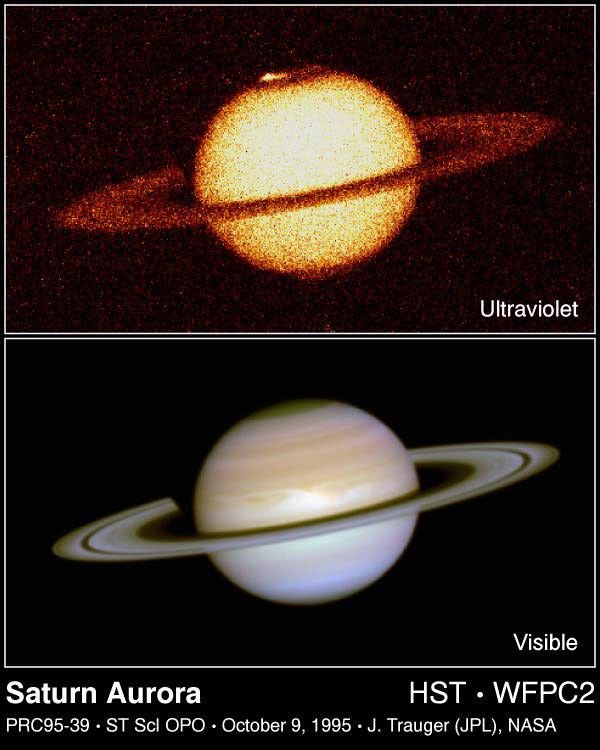1 min read
Discovery of a Dark Auroral Oval on Saturn

The ultraviolet image was obtained by the NASA/ESA Hubble Space Telescope with the European Faint Object Camera (FOC) in June 1992. It represents the sunlight reflected by the planet in the near UV (220 nm).
The image reveals a dark oval encircling the north magnetic pole of Saturn. This auroral oval is the first-ever observed for Saturn, and its darkness is unique in the solar system (L. Ben-Jaffel, V. Leers, B. Sandel, Science, Vol. 269, p. 951, August 18, 1995). The structure represents an excess of absorption of the sunlight at 220 nm by atmospheric particles that are the product of the auroral activity itself. The large tilt of the northern pole of Saturn at the time of observation, and the almost perfect symmetry of the planet's magnetic field, made this observation unique as even the far side of the dark oval across the pole is visible!
Auroral activity is usually characterized by light emitted around the poles. The dark oval observed for Saturn is a STUNNING VISUAL PROOF that transport of energy and charged particles from the magnetosphere to the atmosphere of the planet at high latitudes induces an auroral activity that not only produces auroral LIGHT but also UV-DARK material near the poles: auroral electrons are probably initiating hydrocarbon polymer formation in these regions.
- Object NameObject NameA name or catalog number that astronomers use to identify an astronomical object.Saturn
- Release DateOctober 10, 1995
- Science ReleaseHubble Provides the First Images of Saturn’s Aurorae
- Credit
Related Images & Videos

First Image Ever Taken of Saturn's Aurora
(Top) - This is the first image ever taken of bright aurorae at Saturn's northern and southern poles, as seen in far ultraviolet light by the Wide Field and Planetary Camera 2 aboard NASA's Hubble Space Telescope. Hubble resolves a luminous, circular band centered on the north...
Share
Details
Claire Andreoli
NASA’s Goddard Space Flight Center
Greenbelt, Maryland
claire.andreoli@nasa.gov






























